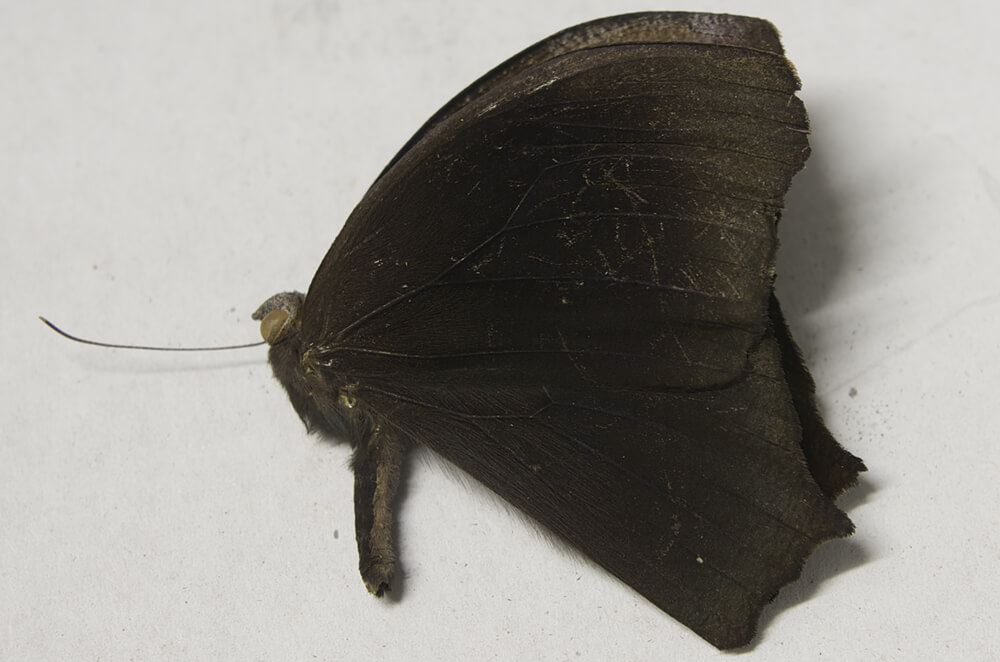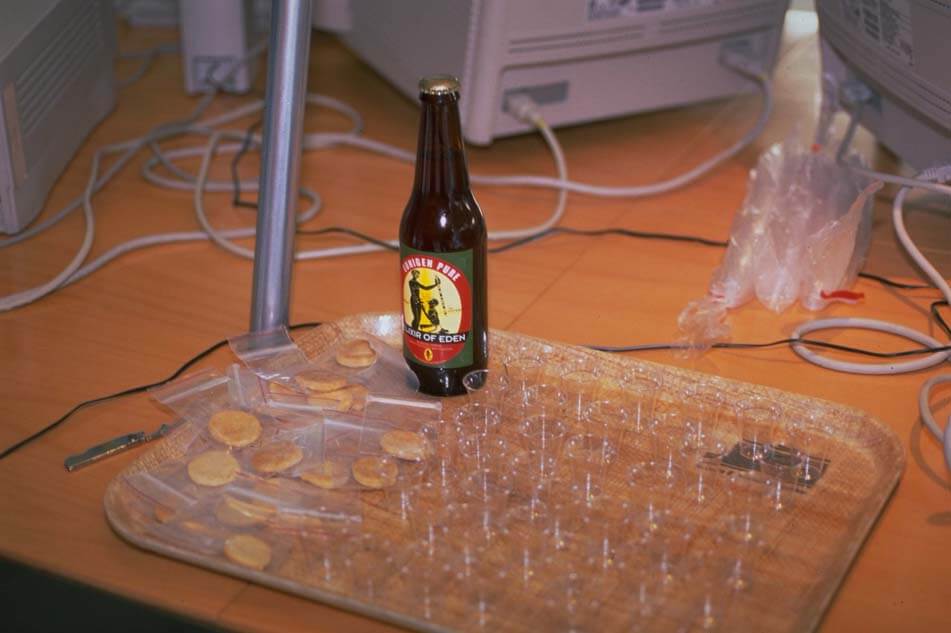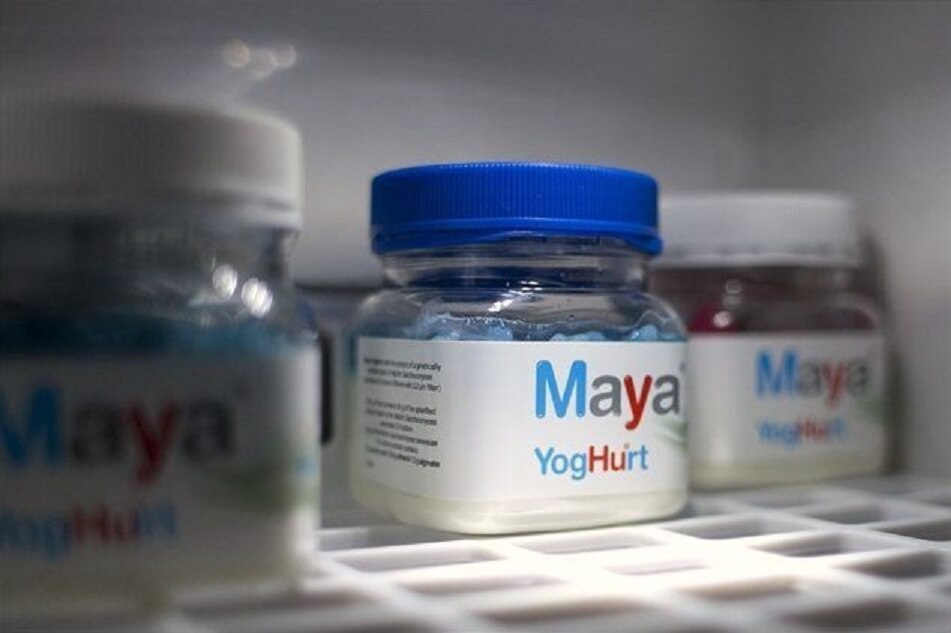Interview by Bilge Hasdemir

Mario Savini (PhD, University of Teramo) is an independent scholar, art critic and journalist interested in art, science and new technologies. Until 2009 he directed contemporary art magazine Extrart (he was the founder too) and currently he is the editor of the Postinterface, a web magazine focused on science and digital culture. Working at the forefront of the art and science collaboration, Mario Savini has a strong interest in the alternative ways to understand continuum between art and life sciences, and intertwined complex realities which influence the way we look at entangled practices of life in a cross-disciplinary framework.
His research can be considered as a revision of his engaging collaboration with artists who have been working deeply and experimentally with life, and guiding scientific thinking with artistic explorations or vice versa. Savini is one of the significant scholars in the field of art and science who provides prominent insights into the idea of transformation and reinvention of life especially in the posthuman condition.
His latest book, Transgenic Art. Life is the medium, has been drawning inspiration from the relationship between creativity and genetic engineering, with a particular fascination for using genetic engineering techniques not only to make work of art but also to provide novel experience with new forms of relationship with the world and life.
The book is thus one of the outcomes of his extensive research and sheds light on how life as a medium opens a new domain for art and science with various applications of biotechnology and genetic engineering. As regards relational perspective the study discloses, it challenges monolithic cultural assumptions of art and science and leads to a more nuanced consideration of intermingling of art and life across joint ontological categories. In this line, the book also highlights blurring the lines between binary distinctions such as ‘natural and artificial, reality and simulation, biological and synthetic.’
Mario Savini considers transgenic art as an important field of action in the current cultural system, ‘it forces us to review what we mean by “art”’, he says. In line with this, it has to be underlined that, transgenic art as a hybrid concept, embodies joint presence of art, science and life in itself.
Transgenic Art. Life is the medium not only invites the reader to explore ‘new, concrete, tangible world’ of artists but also introduces ‘alternatives for new definitions of subjectivity, from a post-anthropocentric perspective.’ It can also be said that the study enriches the bio-ethical and transgenic debates in the field of bioart from a cultural and critical perspective.
Savini’s ongoing close collaboration with bio-artists can be considered as the forerunner of upcoming impressive projects able to highlight new forms of life which might even be completely beyond our comprehension today. And this is one of the reasons why we should follow Mario Savini’s journey in the field of art and science.


You are a journalist and critic with an interest in art that incorporates science and technology. How and when do the interests in these different disciplines come about?
As soon as I finished my studies at the university, I got a scholarship and started a collaboration with the Academy of Fine Arts in Macerata (Italy) where a new technologies department was being created. Later, in 2001, I was entrusted with the teaching of “net art” within the course of contemporary art history. Here, I was lucky enough to meet some professors with whom I started a process of collaboration and discussion on issues related to the relationship between art and new technologies. In the same year, I founded and directed the contemporary art magazine Extrart (until 2009).
Thanks to several collaborators, it was possible to create a reality able to approach young artists who dealt with these issues. At the same time, the frequent trips, mainly abroad, have enriched my knowledge giving me the opportunity to understand concretely what was happening in other countries. These thrusts have encouraged me to believe in projects that are passionate and stimulate me every day.
What are your aims as a theoretic working between art and science?
As the French neurobiologist Jean Pierre Changeux states, a rule on which everyone agrees in science as in art is “novelty”, which excludes the known, the already seen or the already felt. I can say that my studies concern the continuous pursuit of “novelty” in the deepest and most fascinating relationships between art, science and life. In this context, I pay much more attention to the concept of the dematerialisation of art. On the other hand, the transformation of the artist’s figure – as Yves Michaud would say – from “creator of works” to “producer of experiences” is strengthened in our time.
We are faced with the loss of the boundaries between art and life where the different languages contaminate, blend and complement each other with an unprecedented continuity. Art not only experiments with new languages but also loses the characteristics that had distinguished it enlarging its field of research and confusing itself with the most relevant aspects of existence.
We could assume that today, art identifies its own semantics in the gestures of everyday life because art and life are equivalent. The work of art has widened the boundaries of its representation to immerse itself in the experience of life so as to make the contrast between art and non-art increasingly difficult and to create unexpected and unintentional perspectives.
Your latest book Arte transgenica. La vita è il medium focuses on the important artistic developments initiated by the use of genetic engineering techniques. Could you tell us a bit more about the intellectual process behind it?
My research on transgenic art was born during the PhD at the University of Teramo between 2013 and 2016. Some works have encouraged me to deepen the relationship between creativity and genetic engineering. In March 2014, I met Professor Alberto T. Estévez at the University of Catalonia in Barcelona. He is a well-known architect who deals with the relationship between architecture and science and who conceived the Genetic Barcelona Project with the aim of creating bioluminescent transgenic plants for urban and domestic use.
It was a very interesting and constructive meeting. These studies fascinated me more and more, but over time, I found that there was no specific research on transgenic art. Although there were many books and documentation on bio art, there was not a written work gathering all the artists who had used genetic engineering techniques to make works of art.
From this moment on, I started a study to create a “catalogue” that would bring together all these artists and their works. I presented the first results at the Neolife, The Inaugural (Rest of the World) scientific conference at the University of Western Australia (Perth) in 2015. The title of that intervention gave the name to my book: Transgenic Art. Life is the medium. On that occasion, I visited the spaces of SymbioticA, a research laboratory founded by Oron Catts at the School of Anatomy & Human Biology in 2000. This was a good opportunity to meet important exponents of bio art. In the meantime, my research was becoming increasingly substantial and stimulating.
In May 2017, a further study was presented at the scientific conference TABOO – TRANSGRESSION – TRANSCENDENCE in Art & Science at the Ionian University of Corfu in Greece. The title of my speech was Transgenic art: Creativity in the era of genetic engineering. In July of the same year, on the fifty years of the Leonardo magazine, I presented a further study of my research entitled Transgenic Art. The new nature as aestheticization of life at the Bologna scientific conference art*science 2017 / Leonardo 50 – The New and History.
Thanks to all the artists I personally contacted and who collaborated in an excellent way, I could consider my research as complete. After a thorough review of the work by a group of valuable collaborators and university professors, my proposal was sent to Pisa University Press to be published.
What has been a surprising finding on the subject while researching for the book?
One of the things that struck me most during my research was that these artists are proposing a new, concrete, tangible world. Therefore, art makes it possible to have a completely renewed reality where dynamic and surprising perspectives open up. Some bioartists, for example, focus on the production of biotechnology in the food sector.
I am reminded of a 2012 work entitled “Hu.M.C.C.” Human Molecular Colonization Capacity by the Slovenian artist Maja Smrekar. An installation of yoghurt packs presented a new food called Maya YogHurt. The product demonstrated the possibility of using the molecular ability of the human body as a means for food production. To obtain this yoghurt, the human lactic acid gene of the artist was added to a type of yeast.
In the posthuman condition, creativity seems to be a feature not the only type of art, but an expressive form that belongs to several disciplines. What appears in the eyes of the viewer is a real fusion of different lines of research, a mixture of different styles that converge into a single structure or action. The relational processes, which invade more fields of research, go as far as the dimension of everyday life, requiring a more complex critical thought.
These works testify to the speed of the intermingling of the various ontological categories where the bodies connect to the machines in an intimate or hidden way. It is appropriate to say that flesh has merged with technology, creating something that did not exist in nature and that has erased the differences between natural and artificial, real and simulation, synthetic and biological.
The artists open new forms of relationship with the world and life, proposing completely new and possible scenarios. However, being narrow, transgenic art is an important field of action in the current cultural system. Associated with other performative practices, it forces us to review what we mean by “art”. There is more and more space for new creative thought able to ask new questions and find solutions to difficult challenges.
In the Design and the Elastic Mind, the acclaimed exhibition of MoMA curated by Paola Antonelli in 2008, the curator positioned the adoption of living products (i.e. Catts and Zurr, Victimless Leather) as a sustainable organic design solution that would prevent the slaughter of cattle for leather, which definitely is not one of the goals of the piece. This matter pointed out to the danger of not questioning the critical design practice (cleverly criticised by Christina Cogdell 2009). Do you think curators and some critics are over-enthusiastic or too positive when presenting genetic art to the audience?
The post-human condition continuously stimulates us to confront the complexity of the present age. In the biological revolution underway, one of the roles that art assumes is precisely that of proposing new worlds, that is, studying and deepening the changes that could have decisive consequences. New intellectual creativity takes place, faced with the current processes of cultural hybridisation. The relationships between art, science and technology are now well-established.
They are inextricable and live coevolution in a multidisciplinary research area, giving answers or asking questions about the idea of nature and the concept of life, thus configuring alternatives for new definitions of subjectivity from a post-anthropocentric perspective. I share the thought of the American artist Joe Davis when he says in my book:
Art is not only about “responses”. Bioartists introduce research questions, help to pioneer emerging technologies and new materials and contribute cultural and aesthetic contexts essential to translating basic research into useful applications. Whether or not disturbing interpretations and “unforeseeable consequences” of science and technology are presented as compelling artistic subjects, all bioart tends to raise questions about social and cultural paradigms. […] Bioart can be counted among various 21rst century developments in the arts that take on forms and expressions incompatible with traditional media such as painting and sculpture.
Scientifically, it seems we are moving away from the single gene-centred idea in genetics toward a more connected, holistic vision (gut microbial genetics affecting human physiology, more focus on metabolism, swarm behaviours). What’s next for transgenic art?
As reported in a table of the book, I found there has been growing attention from artists towards this research area from 1987 (the year of the presentation of the first transgenic artwork by Joe Davis) to date. More and more artists are using genetic engineering techniques to create new works. It is worth remembering that, in 1999, the Ars Electronica of Linz focused attention on the field of modern biotechnology with LifeScience:
In the aftermath of the Digital Revolution, a Biological Revolution is being proclaimed. Along with the success stories of computer technologies and the fabulous stock market profits reaped by their promoters, reports from the life science field have achieved headline status as dispatches from the “world of wonders”. […] Life science has emerged as a leading contender to become the key technology of the coming decades. Beyond any doubt is its cultural potential.
Specifically, new perspectives are opening in the field of biotechnologies with the use of CRISPR Cas9, a revolutionary gene modification tool that allows cutting and modifying the genome of living organisms in a specific site. Therefore, a very powerful and precise genetic editing tool that is much easier, faster and at the same time cheaper than pre-existing technologies.
Soon we will be able to use these techniques in a totally autonomous way and in places that are comfortable for us. In my book, the American artist Karen Ingram states: “The interesting thing about transgenic art, is that it may very well predict the future by inspiring real business ventures and products”. A bioartist told me “it will be possible to buy these works in the nearest supermarket” in a short while.
Where do you see taking your research into?
In recent years, I have managed to create a network of relationships with important bio-artists, some closer than others. We have established a collaboration I could have never imagined before and we are already working together on future projects. Thanks to them, I was able to build my research on material that has never been published before. The book is the main node from which we’ll start and undertake new projects and develop further ideas.
With the data I had obtained, I managed to create a geography of transgenic art. It emerged that the artists’ attention towards this type of research has become widespread, especially in Northern European countries. Even if less markedly, transgenic art has found greater consideration in artists from the areas between Illinois and Massachusetts in the USA. To my great regret, I have found out that Italy is one of the countries being totally “absent” in this very important international debate. I hope that the circumstances fuelling this type of research can materialise even here in a short time.
What is your chief enemy of creativity?
The main enemy of my creativity is “noise”, the way David Le Breton means in his book Du Silence (2018). The French anthropologist explains how silence is a common necessity to reconquer in conversation, in the political dimension, and in spirituality. Ours is an era where “the desire for distraction” is spreading, and only “silence” can help us to be more creative.
This is also demonstrated by research published in the scientific journal “PloS ONE” in December 2012: Creativity in the Wild: Improving Creative Reasoning through Immersion in Natural Settings. An experiment carried out by three psychologists from the University of Kansas and Utah – Ruth Ann Atchley, David L. Strayer and Paul Atchley – has shown that spending a few days immersed in nature, away from the interconnected and multimedia world, improves creative and problem-solving performances by 50 per cent.
You couldn’t live without…
I am not able to survive without my “home”. It is the place where my projects are born. Here I can find my family, my “window on the world” (books and the internet) and, of course, my silence.






